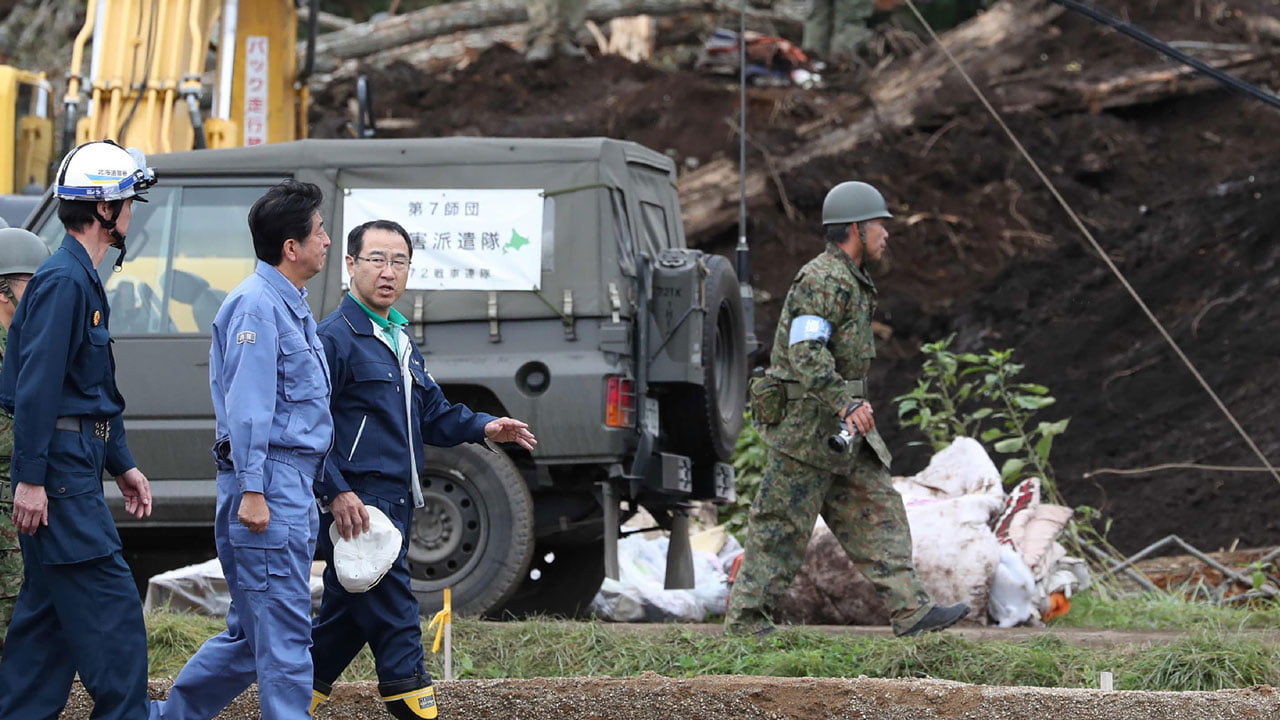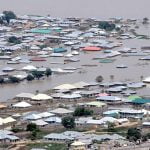Japanese Prime Minister Shinzo Abe visited the quake-hit northern region of Hokkaido Sunday as officials confirmed more deaths, bringing the toll to 42.Abe toured the city and commercial hub of Sapporo, where Thursday’s 6.6-magnitude jolt has left houses tilted and roads cracked.
He also visited hard-hit Atsuma, a small rural town which has seen most of the deaths caused by the quake.A cluster of dwellings in the town were wrecked when a hillside collapsed from the force of the quake, creating deep brown scars in the landscape.
After visiting local political leaders and residents at shelters, Abe quickly returned to Tokyo to hold a cabinet meeting where he said the government will release 540 million yen ($4.9 million) from a reserve fund for the disaster.
“We must create a framework in which the affected municipalities can… take emergency measures and rebuild themselves,” Abe said during the cabinet meeting.
Abe also reported that the death toll rose to 42, according to local media including national broadcaster NHK and Jiji Press.
Chief Cabinet Secretary Yoshihide Suga separately told local media that one person remained missing, Jiji Press said.
The Hokkaido government however said the death toll stood at 39 as of Sunday evening, with one person unaccounted for.
Abe visited the area as search-and-rescue operations continue around the clock to pull more bodies.
“There is on-and-off rain at Atsuma. The work is continuing to look for the missing persons,” a regional disaster management official told AFP.
Abe said the central government has dispatched some 40,000 rescue workers, including Self-Defence Forces, to look for the missing with the aid of bulldozers, sniffer dogs and helicopters.
All three million households in Hokkaido lost power when Thursday’s quake damaged a thermal plant supplying electricity to the region.
Power has been restored to nearly all homes but officials are asking local residents and businesses to save energy, particularly after the weekend, as electricity supplies remain unstable.
The quake was the latest in a string of natural disasters to batter the island nation.
Western parts of the country are still recovering from the most powerful typhoon to strike Japan in a quarter of a century, which claimed 11 lives and shut down the main regional airport.
Japan sits on the Pacific “Ring of Fire” where many of the world’s earthquakes and volcanic eruptions are recorded.On March 11, 2011, a devastating 9.0-magnitude quake struck under the Pacific Ocean, and the resulting tsunami caused widespread damage and claimed thousands of lives.





